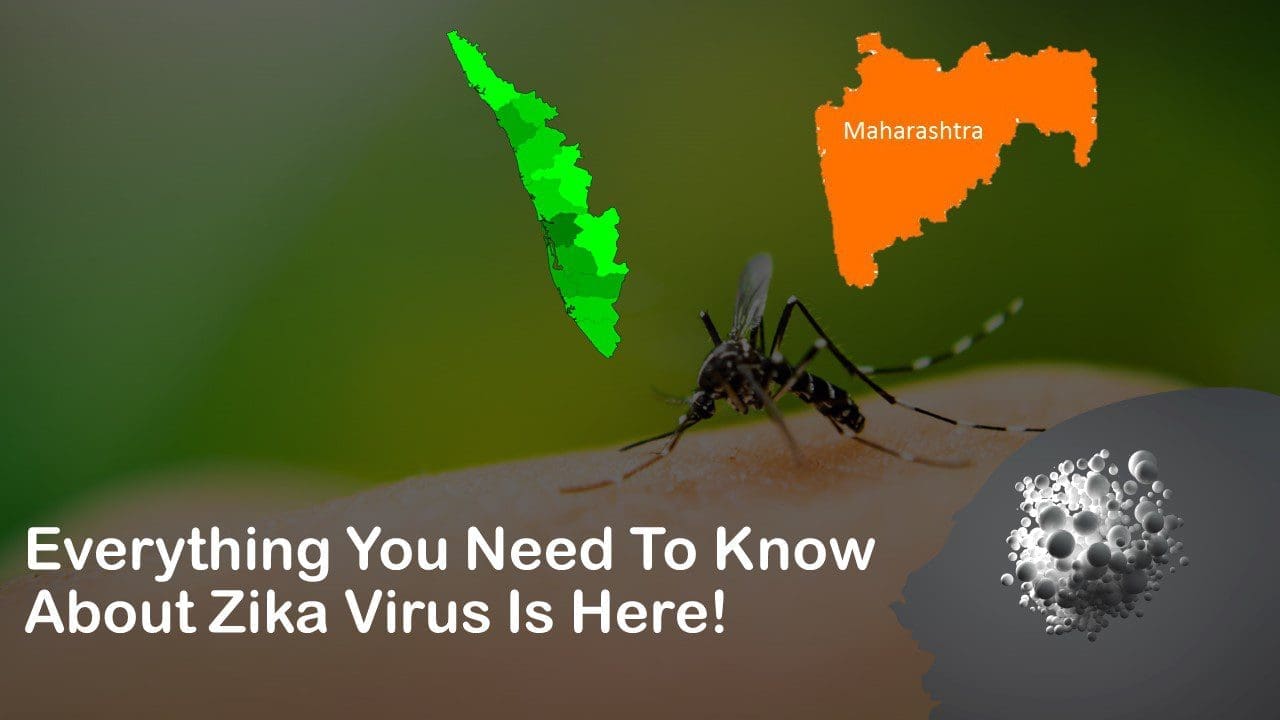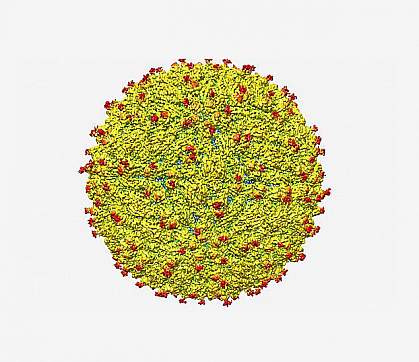
Zika virus is a flavivirus transmitted by mosquitoes. Cases of the Zika virus have been reported in Africa, Southeast Asia, the Indian subcontinent, and the Pacific Islands. It was known to be confined to Africa until 2007 when a case was reported outside Africa.
Since 2014, the Zika virus epidemic has occurred throughout the tropical and sub-tropical regions of the western hemisphere, such as Mexico and Puerto Rico. Since Zika, dengue, and chikungunya viruses are transmitted by mosquitoes during the daytime, it is important that all travelers visiting infected areas take protective measures to avoid mosquito bites throughout the day.

The Zika virus has spread from Africa and Asia, where it is known as a mild illness that causes fever and rashes. It can also cause birth defects if pregnant women are infected during pregnancy or while they’re breastfeeding their babies.
In December 2015, Brazil reported its first cases of locally acquired Zika infections. Since then, more than 2 million people have become ill with Zika across Latin America and the Caribbean region. In January 2016, the World Health Organization declared Zika as a global public health emergency.
On May 11th, 2018, the WHO announced that there were no longer any areas where transmission of the virus could not occur. This means that all countries are now considered endemic zones.
As the Indian states of Maharashtra and Kerala have now been hit by this virus, it’s time we understand what this virus is and how it affects individuals infected by the Zika virus.
In this article, we will try to explain what is Zika virus is and how it can be transmitted. We also provide information about its symptoms and treatment options.
What is Zika?
Zika virus belongs to the Flaviviridae family which includes other viruses such as Dengue fever, West Nile Virus, Yellow Fever, etc. Zika is a mosquito-borne illness. Its name is derived from the Zika Forest of Uganda where the virus was first isolated in 1947.
How does the Zika virus infect us?

Through mosquito bites
- The bite of an Aedes aegypti mosquito is the most important way to spread the Zika virus.
- According to the World Health Organization, Aedes mosquitoes bite during the day peaking in the early morning and late afternoon.
- Aedes mosquitoes lay eggs in and near standing water such as buckets, bottles, bowls, old tires, animal dishes, flower pots, and vases. They are aggressive biters that operate day and night.
- Mosquitoes become infected after they feed on a person who already contracted the virus. Infected mosquitoes then spread the virus to other healthy people through their bites.
From mother to child
- A pregnant woman already infected with the Zika virus can pass on the virus to her baby at the time of birth.
- An expectant mother can transmit the Zika virus to her fetus during pregnancy. Scientists are studying how Zika affects pregnancies.
- So far, there is no report of newborns contracting the Zika virus through breastfeeding. Due to the benefits of breastfeeding, mothers are advised to breastfeed even in regions where the Zika virus is raging.
Through sexual contact
- A man can spread the Zika virus to his sex partners.
- Zika virus exists in semen longer than in blood.
- In one case, the virus was spread several days before symptoms developed.
Through blood transfusion
- Multiple reports of blood transfusion transmission cases appear in Brazil. Scientists are currently investigating them.
- During the French Polynesian epidemic, 2.8% of blood donors were positive for Zika. In previous cases, the virus has been found in blood donors.
What are the symptoms?
Many people who contract the Zika virus won’t have any symptoms. The most common symptoms of Zika virus infection include low-grade fever, myalgia, conjunctivitis, joint pain, arthralgia, headache, skin rash, and post-infection asthenia. More rarely observed symptoms can be pruritus, mucous membrane ulcerations (aphthae), and digestive problems (diarrhea, constipation, abdominal pain).
About one in five people infected with the Zika virus become ill. The most frequent symptoms are fever, headache, rash, muscle pain, joint pain, and conjunctivitis. The incubation period is unknown but is likely to be several days to a week.
See your doctor if you are pregnant and develop symptoms as mentioned above within two weeks after traveling to a place where the Zika virus is circulating. Be sure to tell your doctor about your travel history. The illness is often mild with symptoms lasting for a few days to a week after being bitten by an infected mosquito.
Quite often, people do not get sick enough to go to the hospital, and they rarely die of Zika. Many people might not even realize they have been infected. Zika virus remains in the blood of patients for about a week but sometimes, longer. Once a person has been infected, he is likely to be protected from future infections.
Symptoms can last for several days up to a week.
Why is it dangerous?
If you contract the Zika virus while pregnant, it can cause birth defects such as microcephaly, defects of the eye, hearing, and impaired growth.
Pregnancy and Zika virus
If you are pregnant now but were not when you visited an affected country, then the risk is very low. The virus does not seem to linger in the body, and patients who recover from the infection are lifetime immune.
Does it matter if I am infected with the Zika virus in my pregnancy?

Unfortunately, the answer is yes. The most dangerous period is during the first trimester(first 3 months of pregnancy) when most women do not realize they are pregnant. Scientists still do not know how the Zika virus breaks into the placenta and damages the developing brain of the fetus. Closely related viruses (dengue, yellow fever, and West Nile) do not usually do so. However, viruses from other families (e.g. rubella and cytomegalovirus) sometimes do.
Newborns should be tested for infection with the Zika virus if their mothers have lived in or visited any affected country, regardless of the mothers’ tests are positive or negative. The reason is that infection with Zika could be leading to defects in vision and hearing, along with other abnormalities, even if the baby does not suffer microcephaly. The other defects may require further assessments and testing.
How Zika is diagnosed
Diagnosis is based on the patient’s symptoms and recent history (e.g. mosquito bites, travel to an area where Zika virus is present, etc.) Zika infection shares the symptoms with dengue and chikungunya since they are all spread by the same mosquitoes – Aedes aegypti mosquitoes. If you develop the symptoms described above, immediately go to the hospital. The healthcare provider will order specialized blood tests to detect Zika or other similar viruses in your blood.
Treatment
Up to this time, there is no vaccine or any particular antiviral medication for people positive with Zika virus. The symptoms are mild and usually demand only rest, nourishment, and healthcare support. Since it is impossible to prevent mosquito bites entirely, WHO has advised pregnant women to avoid visiting areas where Zika is being transmitted.
What to do If you have Zika?
- Get plenty of rest
- Drink lots of fluids to prevent dehydration
- Take fever and pain reducer
- DO NOT take aspirin or other non-steroidal anti-inflammatory drugs (NSAIDs)
- If you’re taking medicine for another condition, talk to your healthcare provider before taking additional medication
How can you prevent Zika?
Although there is no vaccine to prevent Zika, there are several things you can do to protect yourself from getting bitten by any type of mosquito:
Women who are planning to become pregnant should consult doctors before departure. Travelers to these countries need to avoid or minimize mosquito bites by sleeping under mosquito nets, staying in screened or air-conditioned rooms, using insect repellent at all times, and wearing shoes, hats, long pants, long sleeves, etc.
- Wear long-sleeved shirts, long pants, hats, and socks.
- Treat clothing and gear with permethrin or buy pre-treated items. Permethrin is a medication and chemical used as an insecticide. Permethrin is a cream or spray which can be purchased over the counter at your local drug or department store.
- Use insect repellent with one of the following ingredients:
- DEET
- Picaridin
- IR3535
- Oil of lemon eucalyptus
- Para-menthane-diol
These are safe for pregnant and breastfeeding women when used as directed.
- DO NOT use insect repellents on babies younger than 2 months old
- DO NOT use oil of lemon eucalyptus or para-menthane-diol on children younger than 3 years old
While at home:
- Stay in air-conditioned places.
- Use screens in windows and doors to keep mosquitoes outside.
- Use mosquito netting to cover babies under 2 months old in carriers, strollers, and cribs.
- Sleep under a mosquito bed net if sleeping outdoors.
- Prevent sexual transmission by using condoms or abstaining from sex.
- Avoid places where mosquitoes are breeding, such as swamps.
- Get rid of water containers to eliminate mosquitoes’ breeding sites.
El Niño and Zika
The Aedes aegypti mosquitoes grow and breed in standing water. Drought, flooding, and temperature rises are all effects of El Niño. An increase in mosquito population can be traced back to the expanse of favorable breeding sites. Steps should be taken to prevent the health effects of El Niño, at first by reducing the population of Aedes aegypti mosquito – the primary vector of Zika virus.
WHO and partners are cooperating to provide support authorities to:
- develop preparedness and response to El Niño;
- strengthen vector surveillance (e.g. percentage of breeding sites in an area reduced);
- monitor the actions to control mosquito population; and
- reinforce any action that helps reduce mosquito population such as source reduction aimed at mosquito breeding spots, utilization of larvicide to treat water sites that cannot be dealt with in other ways (covering, cleaning, emptying), etc.
Individual households can also affect the mosquito population. Containers that can accumulate even small amounts of water such as bottles, buckets, flowerpots, or old tires should be cleaned, covered, or emptied so that mosquitoes cannot use them to breed.
Complications of Zika Virus infections
Microcephaly

Microcephaly is a rare condition wherein an infant has an unusually small head. This is owing to abnormal brain development when the baby is in the womb or during infancy. Children with microcephaly often have difficulties with their brain development when they grow older. Microcephaly can be triggered by a variety of genetic and environmental factors such as Downs syndrome; rubella infection during pregnancy; and exposure to alcohol, drugs, or other toxins in the womb.
Pathologic, epidemiologic, clinical, and laboratory evidence suggests a connection between Zika virus infection during pregnancy and adverse birth outcomes, such as miscarriage, microcephaly, and brain abnormalities. In the 2013–2014 Zika virus epidemic in French Polynesia, there were eight fetuses and infants with microcephaly; it was estimated that microcephaly attacked approximately 1% of fetuses or infants whose mothers were infected with Zika virus during the first trimester of pregnancy.
In the 2015 outbreak in Brazil, many babies were born with microcephaly, intracranial calcifications, abnormal cerebral artery flow, intrauterine growth restriction, other brain abnormalities, and fetal death. Women with Zika virus RNA detected in products of conception had pregnancy losses; those with clinical illness delivered infants with severe microcephaly.
Guillain-Barre syndrome
The appearance of Zika fever is believed to trigger Guillian-Barre syndrome, especially in the cases reported in French Polynesia. This syndrome, due to damage to the peripheral nervous system, is characterized by muscle weakening of rapid onset. This condition can be fatal as in the acute phase it can weaken the respiratory muscles. The patient may require mechanical ventilation to keep breathing.
Guillain-Barre syndrome is an autoimmune disorder, and its exact cause is still unknown. The body’s immune cells damage the peripheral nerves. Also, the correlation between Zika virus infection and Guillain-Barre syndrome remains unknown. This field of study needs more researches to delve deeper into this relationship.
Traveling
Some governments have made public health and travel recommendations to their citizens as a precautionary measure. Travelers are advised to keep up with the latest information about mosquito-borne diseases. If you have any of the above symptoms, consult your local health or travel authority. The measures are designed to avoid being bitten by mosquitoes. Women who are pregnant or thinking of becoming pregnant should follow this advice and also consult their healthcare providers if traveling to an area with a Zika virus outbreak.
Should I postpone or cancel my travel plans to any country on the CDC’s travel advisories list?
The decision is up to you and your doctor. The risk of contracting the mosquito-borne disease is low but the actual risks are unknown. If you can, try to avoid the areas that are affected.
Standard Precautions in Healthcare Settings
Standard Precautions are aimed at protecting healthcare personnel from spreading infections to patients. All blood, body fluids, excretions (except sweat), secretions, non-intact skin, and mucous membranes should contain transmissible infectious agents and include hand hygiene, use of personal protective equipment (PPE), respiratory hygiene and cough etiquette, safe injection practices, and safe handling of contaminated surfaces or equipment in the patient environment.
Since patients with Zika virus might be asymptomatic, Standard Precautions should be available at all times, despite whether the infection is suspected or confirmed. Health care personnel should be careful with the risk of exposure to infectious material during delivery. It is advisable for them to use soap and water or alcohol-based products (foams, gels, rinses) at a minimum, during patient contact and after removing PPE, including gloves.
Importance of Education and Training
Ongoing education and training of healthcare personnel are a facility. The use of specific PPE helps ensure that control policies and procedures are understood and conducted. These educational efforts should indicate that infection prevention strategies improve the quality of patient care and do not change the relationship between doctor and patient.
Obstacles (such as cost and lack of standard protocols in facilities) to the implementation of Standard Precautions should be addressed as soon as possible. The facility, nursing, and obstetric leadership are crucial for instituting infection prevention policies and enhancing the routine use of and adherence to Standard Precautions.
The current Zika virus outbreak provides an opportunity to imply the importance of adherence to strategies to prevent the transmission of infectious diseases in healthcare settings, including labor and delivery units. Any information or updates about the Zika virus CDC can be found online.
In conclusion, you should avoid mosquito bites to prevent yourself from contracting Zika virus.



Be the first to comment